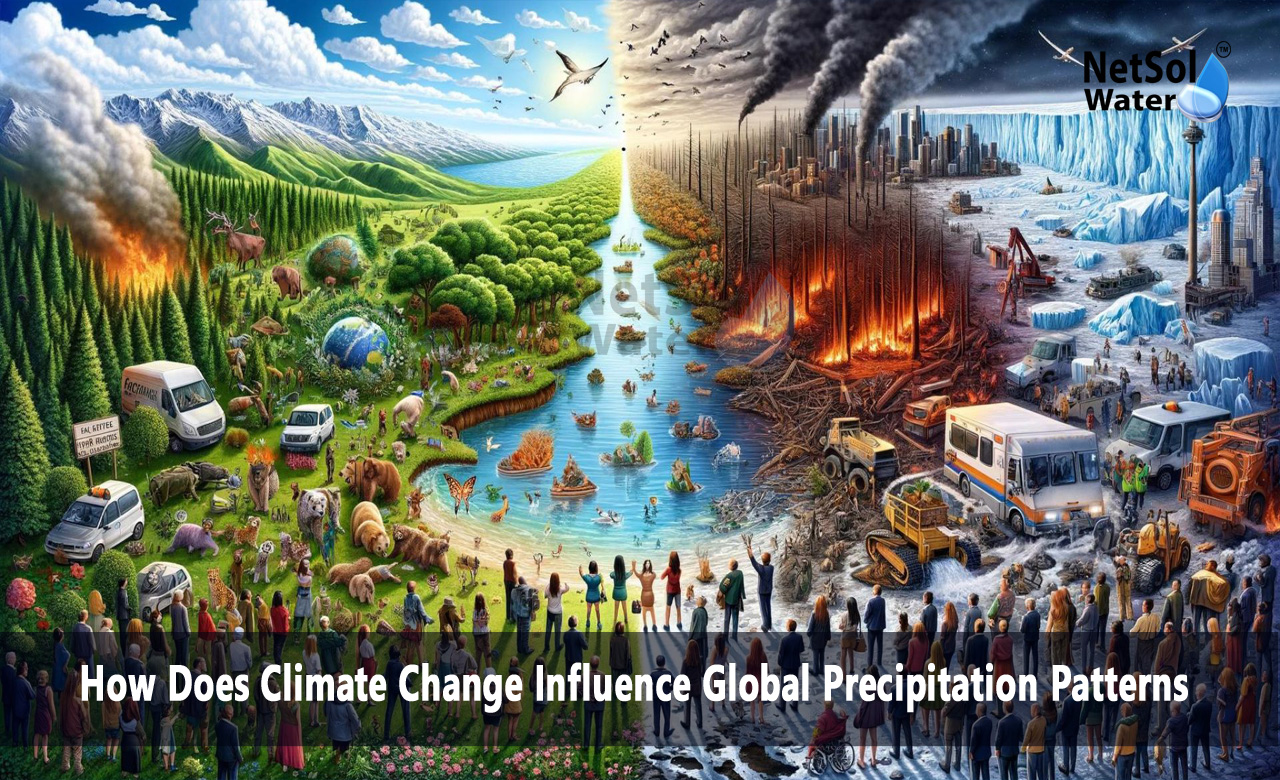How Does Climate Change Influence Global Precipitation Patterns?
The way rain falls across our planet tells a fascinating story about Earth's changing climate. Picture this: somewhere, a farmer watches their crops wither under relentless drought while in another part of the world, communities face devastating floods. These events connect directly to shifts in global precipitation patterns brought by climate change. As Earth's temperature rises, we see dramatic changes in where, when and how much rain or snow falls. This affects everything from the food we grow to the water we drink. Changes in precipitation touch every corner of our planet, shaping ecosystems, economies and human lives.
Understanding these changes helps us prepare for future challenges and shows us why we need to act on climate change now. The water that falls from our skies forms the backbone of life on Earth yet climate change rewrites these ancient patterns in ways that impact us all. Let's explore how warming temperatures transform the way water moves through our atmosphere and what this means for our future.
The Science Behind Changing Precipitation
Understanding how climate change affects rain and snow starts with knowing how our atmosphere works. When we heat the Earth's surface we change how water moves between the ground and the sky. This process forms the foundation of all precipitation changes we see today. Let's explore the key ways rising temperatures transform our rain and snow patterns.
Temperature and Water Vapor Connection: Heat makes water eager to become vapour. As our planet warms more water lifts into the air. This increased moisture creates perfect conditions for intense rainfall. Think of a pot of water on a stove - turn up the heat and more steam rises. Our atmosphere works the same way. More heat means more water vapour waiting to fall as rain.
Storm Systems in a Warmer World: Warmer air changes how storms behave. Heat adds energy to weather systems making them more powerful. This extra energy leads to stronger storms that dump more rain in shorter times. We now see storms that once happened every hundred years striking every few decades. These changes show up most clearly in our shifting seasonal patterns.
The Role of Ocean Currents: Oceans store huge amounts of heat. As they warm, they change the paths that storms follow. Warm ocean waters fuel stronger hurricanes and affect where rain clouds travel. These changes ripple through our whole weather system creating new precipitation patterns across the globe.
Regional Impact and Changes
Climate change affects different parts of the world in unique ways. Some areas face more rain while others deal with extended dry spells. These changes reshape landscapes and challenge communities worldwide. Let's examine how precipitation patterns shift across various regions.
Tropical Areas: The tropics experience the most dramatic changes. Rainfall here becomes more extreme with intense wet seasons followed by harsh dry periods. This creates challenges for farming and increases flood risks. Many tropical communities now adapt their traditional practices to handle these new patterns.
Mid-Latitude Regions: Places like Europe and North America see their rainfall patterns become less predictable. Winter storms bring more rain instead of snow affecting water supplies for summer months. Spring rains often arrive at wrong times for planting crops forcing farmers to adjust their growing seasons.
Polar Regions: The Arctic and Antarctic show perhaps the biggest changes. Rising temperatures mean more rain falls instead of snow. This affects everything from wildlife to indigenous communities. The shift from snow to rain speeds up ice melts, creating a feedback loop that further warms these regions.
Future Implications and Solutions:
The way precipitation patterns change shapes our future in profound ways. These changes affect food production, water supplies and how we build our cities. Understanding these impacts helps us prepare and adapt. Let's explore what lies ahead and what we can do about it.
Food Security Challenges: Changing rain patterns makes farming more difficult. Farmers need to choose different crops and change when they plant. Some areas might become better for farming while others turn too dry. This reshapes how we grow food worldwide.
Water Management: Cities and towns need new ways to handle both floods and droughts. This means building better storm drains, planning for water storage, and protecting natural flood barriers. Smart water management becomes key to protecting communities.
Building Climate Resilience: Communities worldwide adapt to new precipitation patterns. This includes changing building codes, developing early warning systems and creating emergency plans. These steps help protect people from extreme weather events.
Conclusion:
Understanding how climate change influences global precipitation patterns matters for everyone. Want to learn more about how these changes affect your area? Join our community of weather watchers and climate advocates. Share your local weather observations to help track precipitation changes and become part of the solution. Contact us to discover how you can help document and respond to changing weather patterns in your region.
Netsol Water is Greater Noida-based leading water & wastewater treatment plant manufacturer. We are industry's most demanding company based on client review and work quality. We are known as best commercial RO plant manufacturers, industrial RO plant manufacturer, sewage treatment plant manufacturer, Water Softener Plant Manufacturers and effluent treatment plant manufacturers. Apart from this 24x7 customer support is our USP. Call on +91-9650608473, or write us at enquiry@netsolwater.com for any support, inquiry or product-purchase related query.



